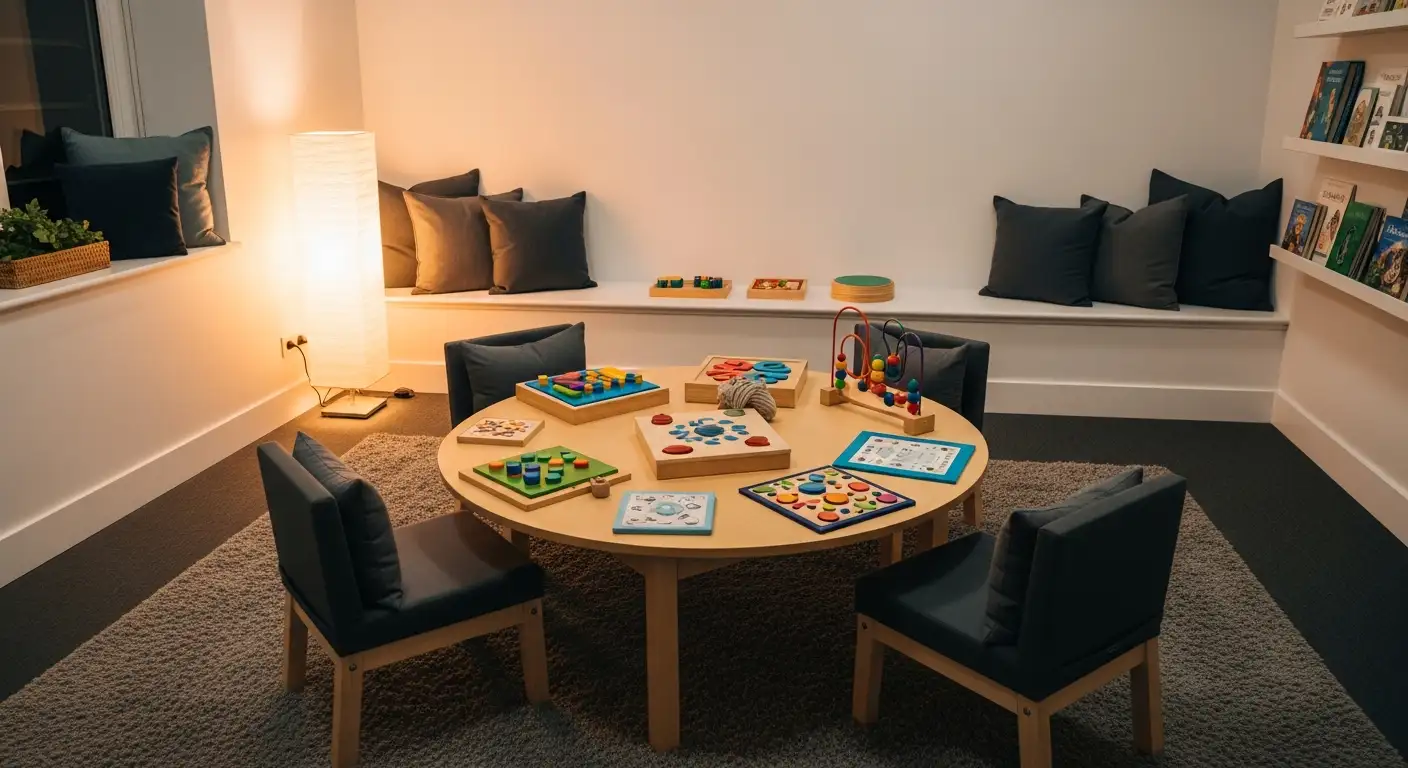Building Bridges with ABA Therapy
Applied Behavior Analysis (ABA) therapy is a key intervention for children with developmental challenges, especially autism spectrum disorder. Beyond the individual child's progress, ABA therapy plays a vital role in strengthening family interactions, fostering collaboration, and creating supportive environments. This article explores how ABA therapy encourages positive family dynamics, the strategies used, and the critical role families play in the success of these interventions.
The Importance of Family Involvement in ABA Therapy
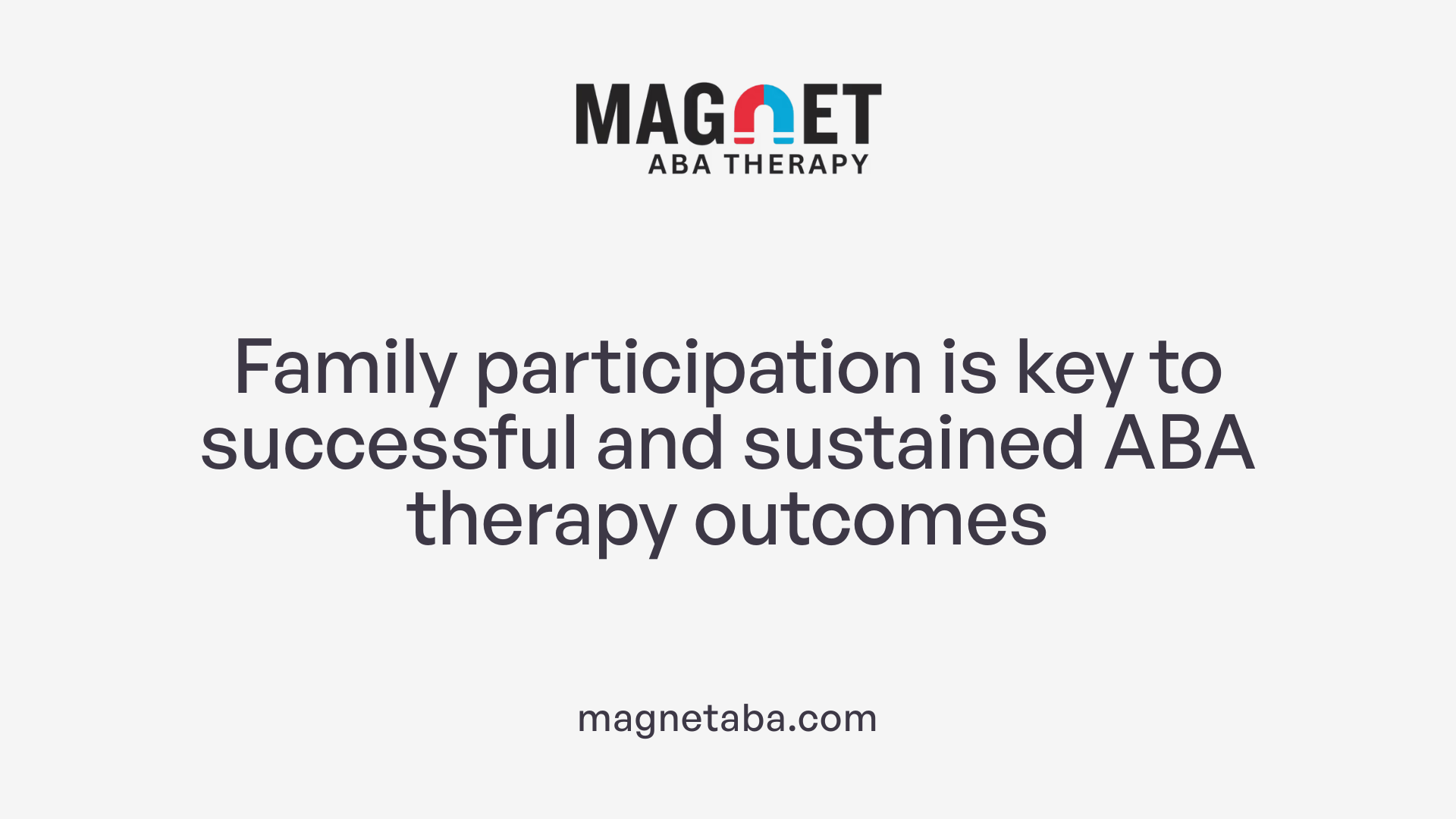
What is the role of family members in supporting a child's development through ABA therapy?
Family members are fundamental to the success of ABA therapy. Their active participation enables consistent application of therapy strategies across various settings, especially at home. By reinforcing skills and behaviors learned during therapy sessions, families help children generalize these new abilities to real-life situations. Regular communication with therapists, attending parent training programs, and maintaining consistent routines all contribute to an environment conducive to growth.
Parents and caregivers are also instrumental in monitoring progress and providing emotional support. Their understanding of their child's unique needs, triggers, and preferences allows them to tailor interventions effectively. Adoption of behavioral techniques such as positive reinforcement, prompting communication, and guiding daily routines ensures that therapy benefits are maximized outside the clinical setting.
Furthermore, family involvement fosters stronger emotional bonds, reduces stress, and creates a supportive environment essential for motivation. By working collaboratively with therapists, families help sustain behavioral changes and support their child's development across all areas. In sum, family members serve as critical partners, ensuring that the principles of ABA are consistently practiced, which results in meaningful, long-term improvements in the child's communication, social skills, and independence.
How ABA Therapy Enhances Family Interactions and Communication
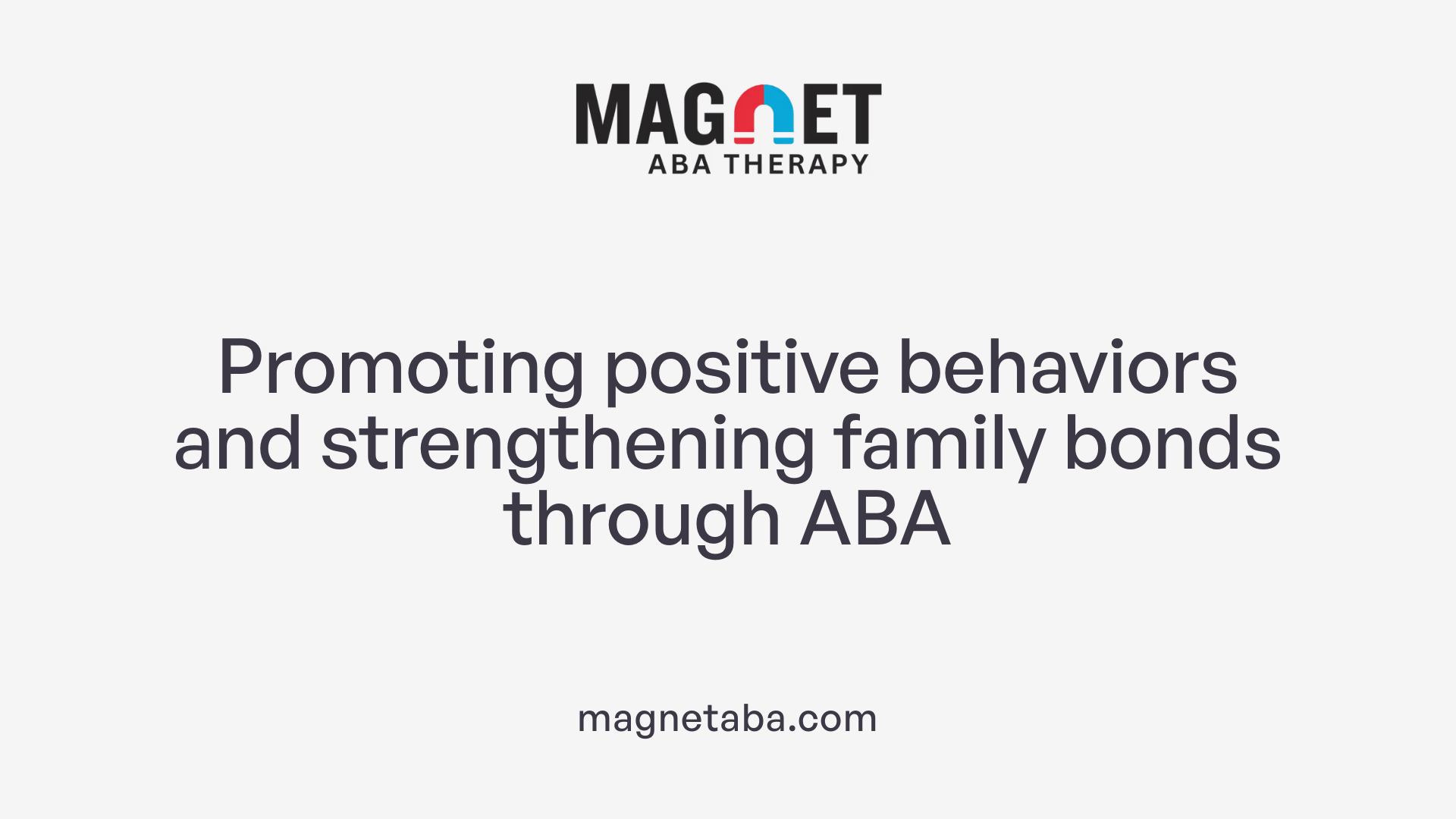
How does ABA therapy promote positive behaviors and interactions within the family setting?
ABA therapy encourages the extension of positive skills into everyday family life by equipping caregivers with effective behavior management strategies. Parents and siblings learn methods such as promptings, reinforcement, and structured routines that help children adopt positive behaviors. Regular training sessions empower families to reinforce these techniques consistently across various settings, fostering a harmonious environment.
Structured activities like collaborative play and shared goals promote trust, patience, and understanding among family members. Including siblings in therapy sessions can increase their awareness and supportive behaviors, thereby strengthening family bonds.
This approach creates a supportive space where every family member feels valued. As children learn to regulate emotions and behaviors with family support, it leads to more engaging, trusting, and positive interactions that support long-term growth.
How does ABA therapy strengthen family bonds and improve communication?
By teaching children functional communication skills, ABA makes it easier for family members to understand and respond effectively to their child's needs. Enhanced communication reduces misunderstandings and behavioral issues, promoting a more connected family dynamic.
Parent training is vital, offering caregivers strategies to reinforce skills at home and manage challenges with confidence. This shared effort in executing ABA techniques improves emotional bonds and encourages supportive responses.
Structured routines and positive reinforcement foster enjoyable interactions, making everyday moments meaningful. As children develop social skills, siblings and parents strengthen their relationships through shared activities and understanding. Ultimately, ABA therapy creates an environment of trust and cooperation, enriching family cohesion and fostering a positive outlook for future progress.
Strategies to Encourage Positive Family Interactions through ABA
What strategies are used in ABA therapy to encourage positive interactions within families?
ABA therapy utilizes a variety of approaches to foster positive family interactions. One essential method is implementing parent training programs, which teach family members how to apply reinforcement, prompting, and modeling techniques. These skills help parents support their child’s development effectively at home.
Open and ongoing communication between parents and therapists ensures interventions are personalized and adaptable to the family’s needs. This collaboration promotes consistency across different environments, increasing the likelihood that learned behaviors will generalize well.
Reinforcing positive behaviors with praise, rewards, and incentives encourages children to repeat desirable actions. Creating structured routines and a predictable environment provides stability, reducing anxiety and promoting cooperation.
By actively participating in therapy sessions and learning effective strategies, families strengthen their relationships and foster a more harmonious home atmosphere. Overall, engaging families and providing them with practical tools help improve communication, reduce stress, and build stronger, positive bonds within the family.
Why is family participation important for the success of ABA therapy outcomes?
Family involvement is crucial because it ensures consistent application of therapeutic strategies across all settings. When parents reinforce skills learned during therapy at home, children are more likely to generalize behaviors and maintain progress over time.
Active participation increases the child's motivation and emotional well-being by creating a supportive environment that celebrates successes. It also allows parents to understand their child's unique needs and triggers, leading to tailored interventions that work effectively.
Furthermore, involving families enhances communication with therapists, enabling them to share observations and adjust goals as needed. This teamwork results in quicker skill acquisition, better problem-solving, and sustained improvements.
In summary, family participation not only amplifies therapy effectiveness but also empowers parents to continue fostering their child's growth. It cultivates long-term success and helps build a nurturing environment conducive to lifelong learning and development.
The Impact of Family-Centered Approaches
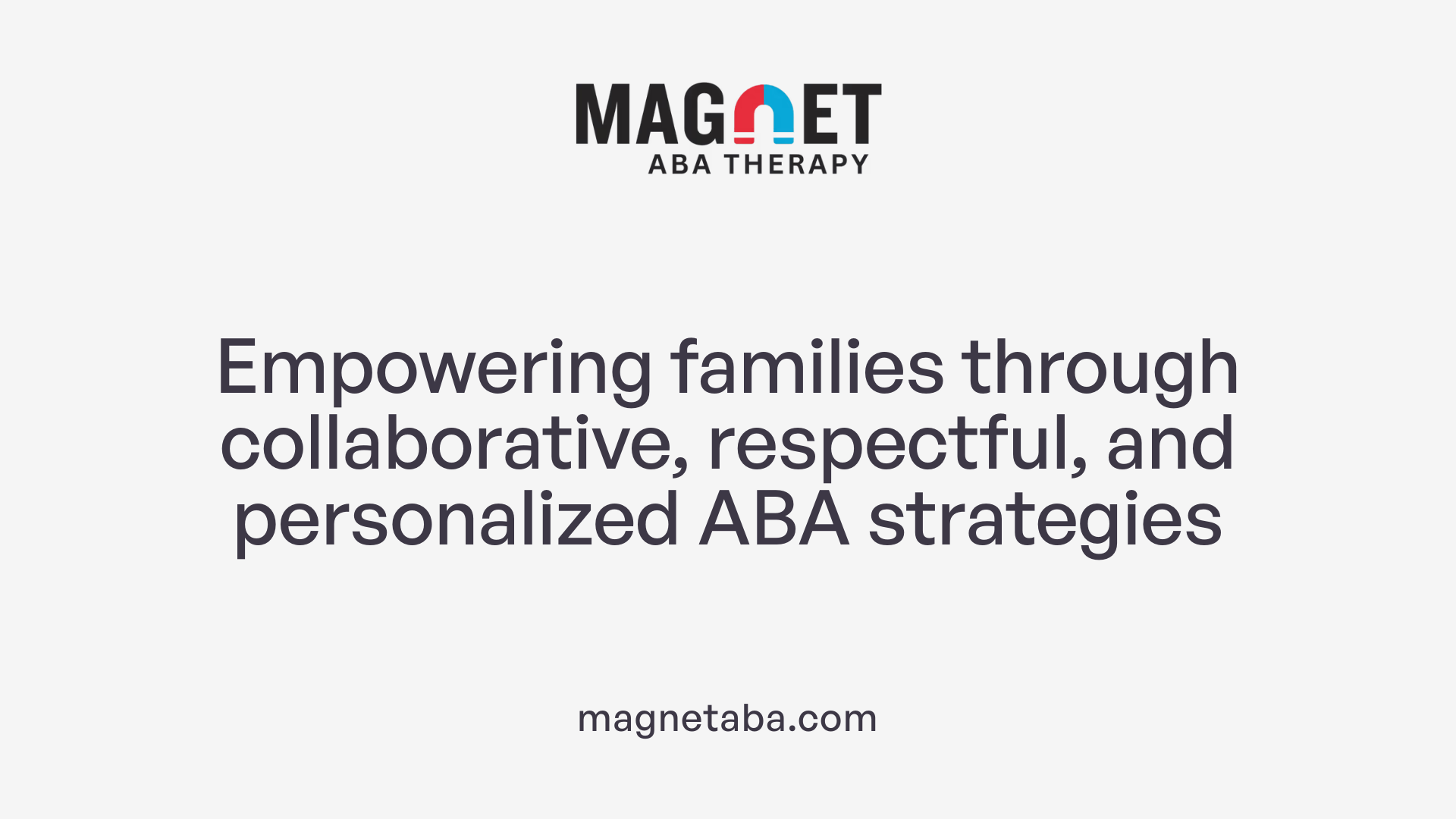
What are the principles of family-centered ABA approaches and their impact on family relationships?
Family-centered ABA focuses on actively involving family members in every stage of therapy, from planning to implementation. This approach emphasizes empowering parents and caregivers with a solid understanding of behavioral principles like positive reinforcement and prompting.
By collaborating closely with therapists, families gain the confidence and skills needed to manage and support their child's development effectively. Personalized training sessions are tailored to each family's unique needs, making strategies more practical and sustainable.
This involvement helps strengthen relationships within the family. It fosters trust, understanding, and a sense of teamwork, as parents see themselves as active partners rather than passive observers.
Recognizing the importance of family dynamics, the approach considers how relationships and routines influence progress. Family-centered ABA promotes a supportive environment that nurtures growth while also enhancing the emotional bonds among members.
In summary, this approach not only advances the child's development but also reinforces family cohesion. It creates a partnership where everyone works together towards shared goals, leading to more meaningful and lasting change.
Creating a Supportive Environment for Family Engagement
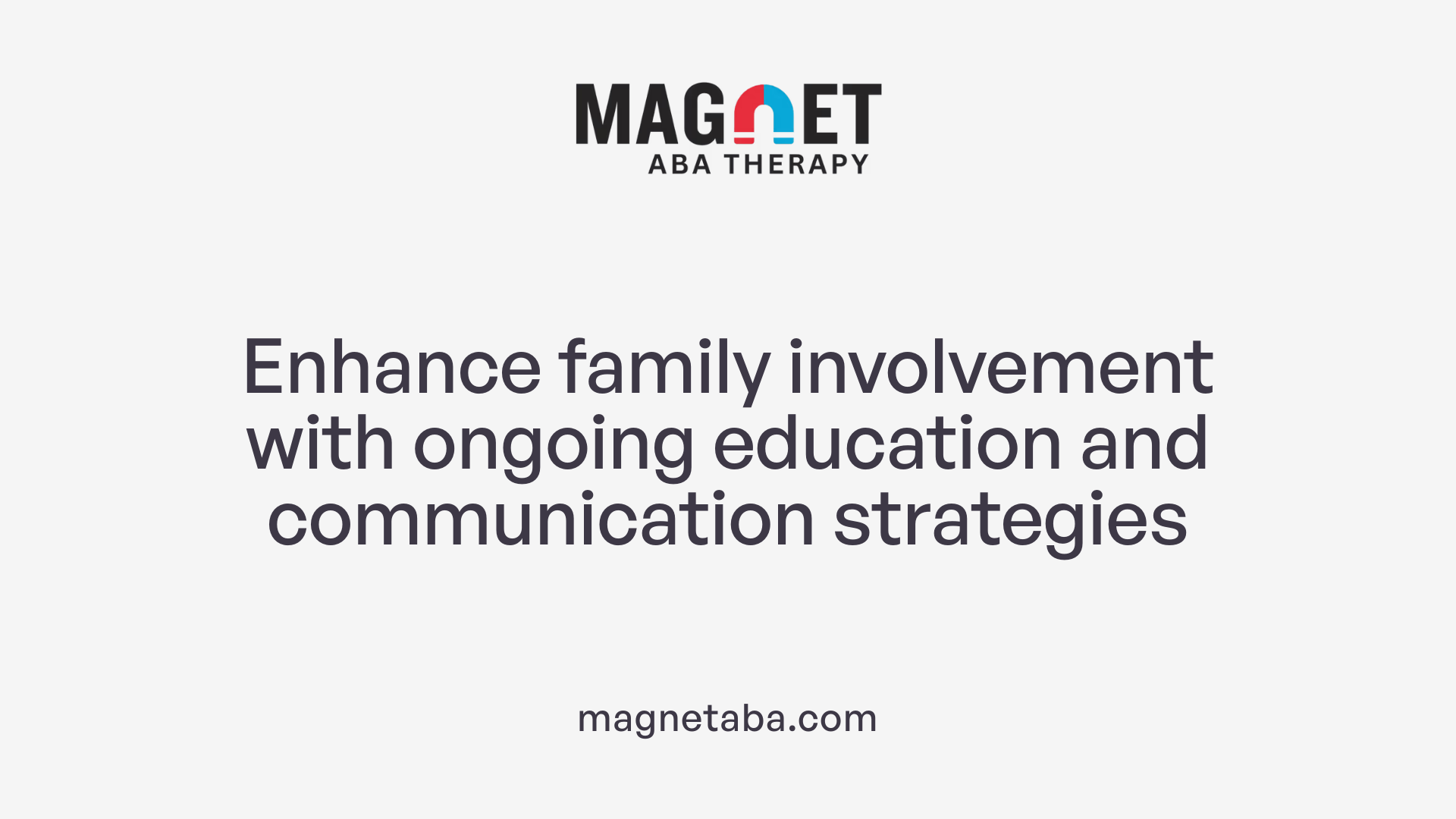 To foster effective family involvement in ABA therapy, establishing structured routines at home is essential. Consistent daily schedules help children understand expectations, reinforce learned skills, and reduce anxiety. Incorporating routines such as morning preparations, mealtime behaviors, and bedtime rituals aligns with therapy goals and encourages skill generalization.
To foster effective family involvement in ABA therapy, establishing structured routines at home is essential. Consistent daily schedules help children understand expectations, reinforce learned skills, and reduce anxiety. Incorporating routines such as morning preparations, mealtime behaviors, and bedtime rituals aligns with therapy goals and encourages skill generalization.
Inclusive, culturally responsive practices are equally important. Recognizing and respecting family values, traditions, and cultural backgrounds helps tailor ABA strategies that are meaningful and effective for each child. Culturally aware approaches foster trust, promote collaboration, and ensure families feel valued and understood.
Supporting families with ongoing education and resources enhances their confidence and ability to support their child's development. Families can access various materials such as parent training manuals, workshops, webcasts, tip sheets, and infographics. These resources provide practical guidance on behavior management, skill reinforcement, and intervention strategies.
Regular communication is vital. Many programs encourage scheduled interactions through communication logs or digital platforms, facilitating continuous feedback and adjustment of intervention plans. Sharing progress videos, success stories, and providing demonstrations help motivate parents and enhance their understanding.
Creating a supportive environment involves collaboration, cultural sensitivity, and continuous education. When families are empowered and equipped with the right tools, they become active, confident partners in their child's behavioral growth, leading to more consistent and effective therapy outcomes.
Harnessing the Power of Collaborative Effort
In summary, ABA therapy is a powerful tool not only for promoting individual skill development but also for nurturing positive family interactions. Its family-centered methods and collaborative strategies create a supportive environment where parents become active partners, strengthening bonds, improving communication, and fostering resilience within the family unit. By leveraging educational resources, structured routines, and ongoing communication, families can significantly enhance therapy outcomes and build a cohesive, nurturing foundation for their child's future.
References
- The Role of Family in ABA Therapy: Tips for Parents
- Part 9: Importance of Family Involvement in ABA Therapy
- Understanding and Implementing Family-Centered ABA Programs
- Benefits of In-Home ABA Therapy for Children - UTBS
- What Parents Do During In-Home ABA Therapy: Insights & Tips
- Why Parent Involvement is Key to Effective ABA Therapy
- ABA Therapy in Center: How Involving Parents Makes a Difference
- Part 9: Importance of Family Involvement in ABA Therapy



